Rimpact, a UK-based manufacturer of high-end tire inserts, is developing a Tuned Mass Damper (TMD) for mountain biking. Suspending a Tungsten weight between two coil springs, inside a package that slots neatly inside the fork steerer tube, the TMD is strategically positioned to damp vibrations induced by bumps and compressions experienced on the trail.
A first-of-its-kind for mountain biking, this chassis-stabilizing component is still very much under development, but the accelerometer data collected by the engineers at Rimpact are showing promising trends. And, more importantly, they say it makes the bike feel better on the trail, while making riders faster at the same time – that’s from blinded back-to-back testing versus placebo, for anyone choking on their morning coffee.
Here’s the backstory, and how the development process is going so far.
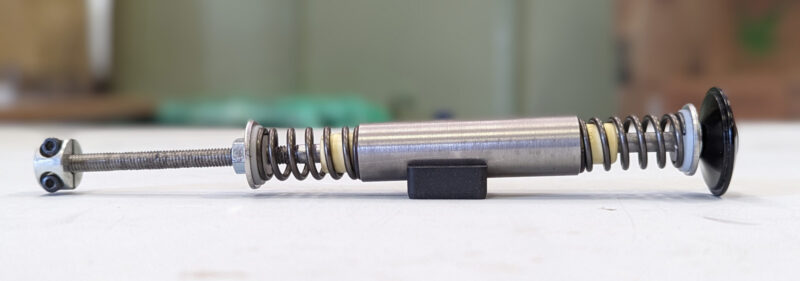
Rimpact is Developing a Tuned Mass Damper for Mountain Bikes
First up, it’s pertinent to answer the following question….What is a Tuned Mass Damper?
In essence, it is a weight suspended between springs, that is positioned inside a dynamic structure in order to damp that structure’s movement or oscillations. As the structure moves, the weight moves out of phase with it, removing energy from the system and bringing it back to a more neutral state earlier on. You may also see it referred to as a harmonic absorber or seismic damper, the latter conjuring up images of the famed devices found inside the Taipei 101 or Shanghai Tower, that have both become something of a tourist attraction.
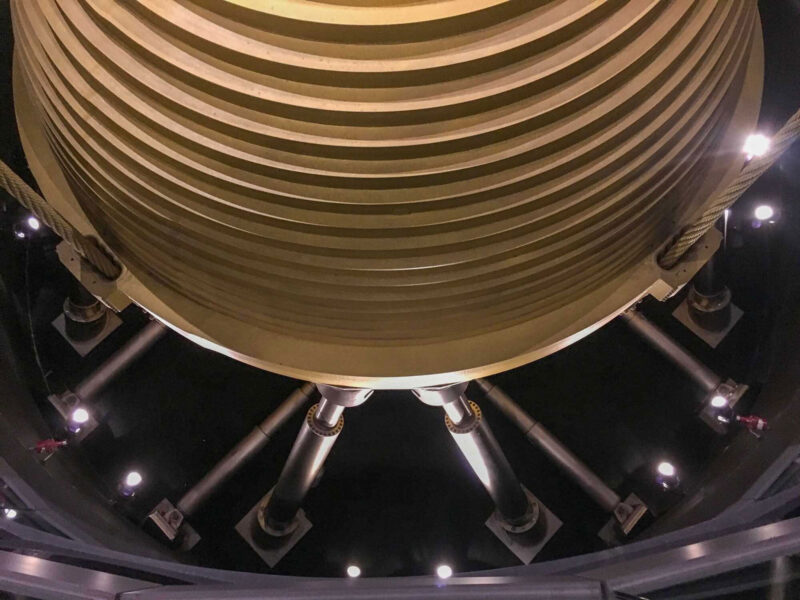
What on earth does that have to do with mountain biking? I’m getting there, but first it is interesting to look at the use of Tuned Mass Dampers in motorsport.
While TMDs in skyscrapers serve to reduce the tower’s maximum amplitude, or how much they sway during tremors or high winds, the TMDs used in motorsport applications are designed to improve the dynamic stability of the car when it hits bumps on the road, and to hold it in a more aerodynamically favorable position thereafter. Vertically positioned on the car’s chassis, right between the two wheels, the TMD acts to bring the nose back down quickly if it is deflected up by a bump, or raised up under rapid acceleration.
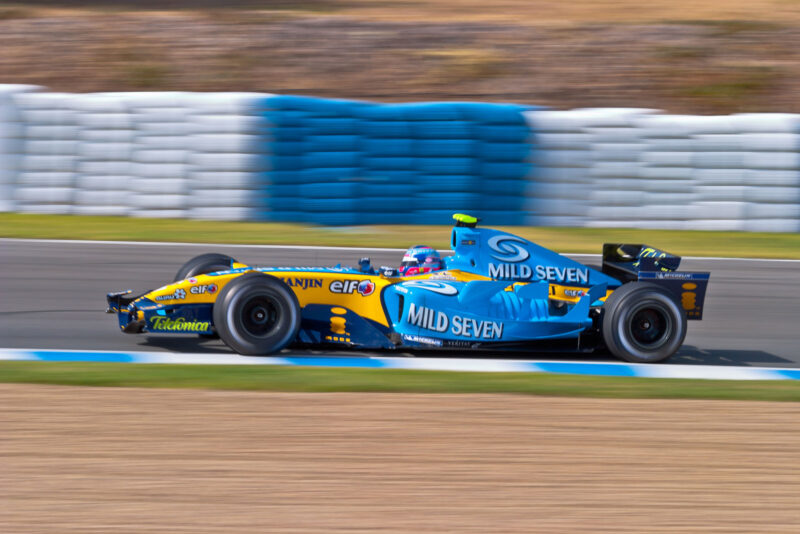
We are informed that the TMD implemented very successfully by Renault offered such an advantage to Alonso that in 2006, the FIA issued a technical bulletin declaring the mass damper illegal on the grounds that it was a moveable aerodynamic device. It was this application of the Mass Damper that caught Rimpact founder, Matt Shearn’s attention.
Matt thought to himself, “if it’s good enough for them [F1 drivers], then perhaps it could be good enough for us [mountain bikers]”. And so, for the last 2.5 years, Matt has been quietly working away on a TMD for mountain bikes.
The Rimpact TMD Prototype
The Tuned Mass Damper under development by Rimpact looks much more like the F1 TMD than it does the examples used in the skyscrapers that are sub-optimally located in earthquake-vulnerable geographies. That’s because it is designed to stabilize movement through a single plane (up and down), rather than the 360° movement exhibited by a tower.
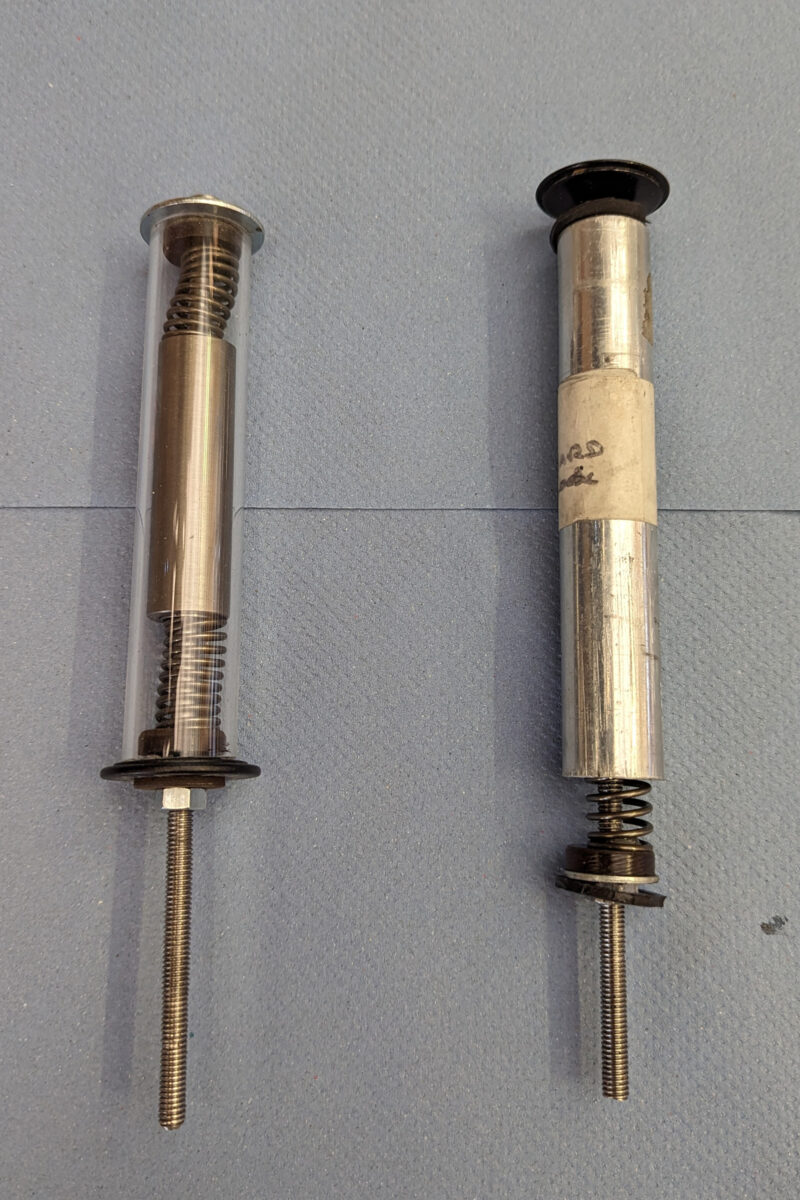
Importantly, it proposes to offer similar advantages – less so in regard to aerodynamics of course, but certainly in the way of chassis stability, and subsequent ease of handling.
“I’ve been trying to decipher whether there would be any use in mountain biking – first of all trying to work out how the thing works for one – and if it did work, how would it change the way we ride bikes – whether it would make the bike better in any way, or whether it would hinder it”
Matt Shearn, Founder of Rimpact.

After much thought, he concluded there was at least value in building a prototype to see what it did. The first prototype was as basic as it gets; a couple of “random springs” suspending some putty inside a clear acrylic tube. Matt strapped it onto his bike and slammed the front wheel into the ground, just to see the putty weight oscillating between the springs. Holding onto the bars, he was interested to see if he could feel any difference with or without the contraption.
It’s about as un-scientific as it gets, but you have to start somewhere, right? With his interest piqued, it was time to get serious with a more robust prototype and some accelerometer data.
Fast forward to around March/April of this year, and Rimpact had a working prototype, the influence of which on ride feel was unmistakable.
Does a Tuned Mass Damper actually work for MTB?
That’s still to be confirmed, but based on their experiences so far, Matt Shearn and the team at Rimpact are quietly confident.
“We all felt like it was making a difference, and our Strava results suggested it was making a difference. But, it was totally anecdotal but there wasn’t enough scientific rigor there to prove that it was actually working”.
Matt Shearn
With the TMD device in a jig, Rimpact have been able to corroborate with the use of accelerometers that they see a reduced amplitude of force at the handlebar with the device installed, as compared to control. At least in this very specific scenario, that arguably isn’t super relevant to trail riding conditions, it undoubtedly is having an effect.
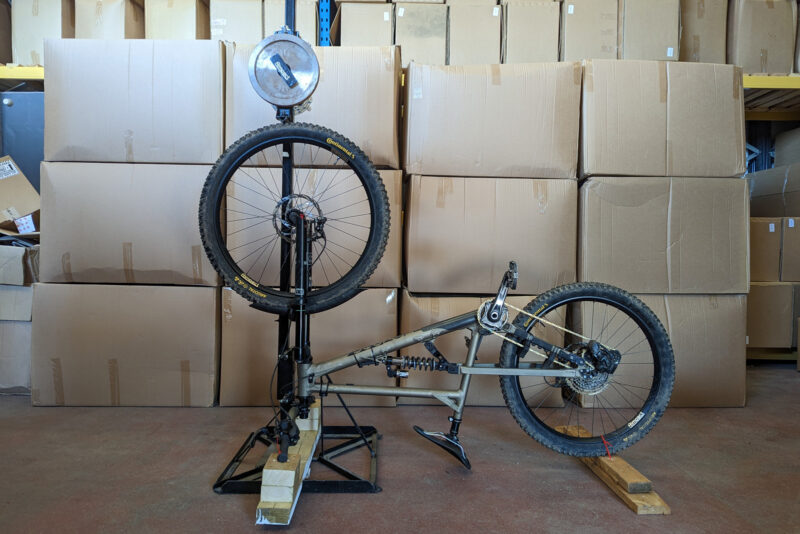
Matt explains, “If you were to somehow be able to visualize the vibrations that pass through the bike during the rising of your handlebars [when the front wheel hits a bump], the vibration is travelling up through the bike and oscillating at a really high hertz, but the mass is offsetting some of those vibrations so you’re feeling them less. It is both bringing the total amplitude of force down, but also reducing the noise from vibrations coming up through the bike”.
At this stage, we want to see actual data from the trail.
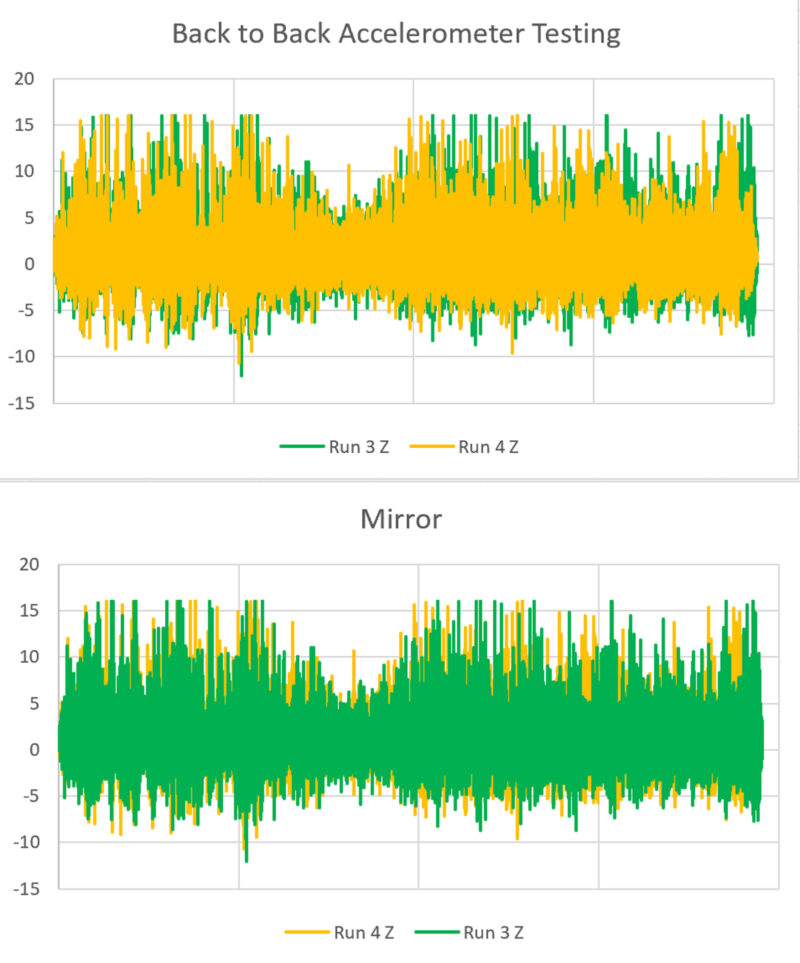
The above graph shows the total measured force through the handlebar, as recorded by accelerometers, over a three minute trail. The Y axis is G force and the X axis is time. Data from Run 3 is without the TMD, and Run 4 is with the TMD – with Rimpact’s “Medium” springs fitted.
Matt explains, “It’s hard to see visually what is happening here but Run 4 measures 19% less total G forces recorded compared to Run 3 when normalized to the same time frame (as the run took less time to complete, we removed this excess data from the slower run to more accurately compare the readouts). Run 4 took less time to complete which is evident by the force spikes on the graph running out of sync and points to a system that works to help the rider go faster. Whilst this is just one graph the results across the day of testing and other tests we’ve performed yield similar results. Currently we are conducting many hundreds of test runs to validate this analysis”.
On top of the accelerometer data, Rimpact also have a bank of more subjectively captured data in the form of rider feedback. Matt tells us that anyone who rides the TMD is able to feel a difference in the bike’s handling. They say the difference is subtle, but they feel like they ride better, that they carry more pace through corners, and they don’t feel the spikes of compression through the fork when they hit big roots. They don’t get those harsh feelings through the bike and they simply prefer riding with it, versus riding with the placebo version.
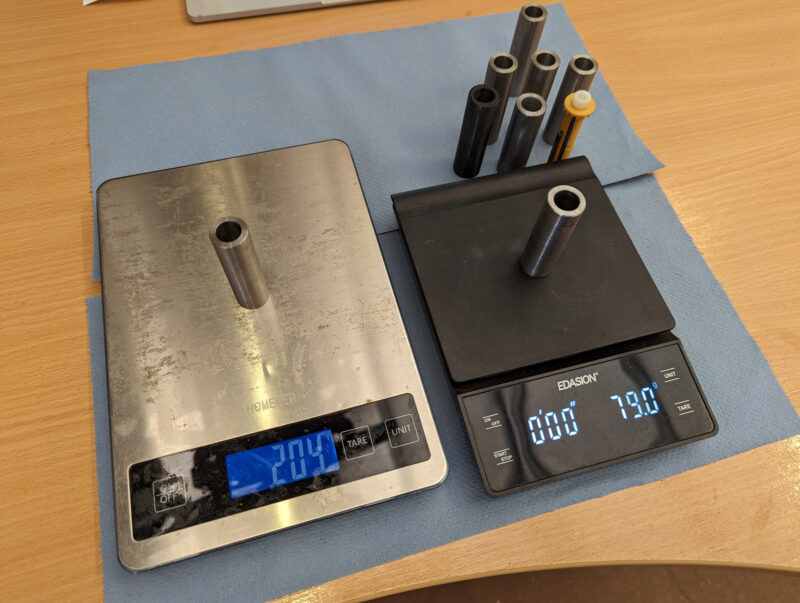
When can I buy one?
Alas, that is also to be confirmed. Matt is clear that he wants to prove the Rimpact TMD has a beneficial impact for mountain bike riders before he sticks it on the market. He currently has a number of TMDs out in the wild, with test riders conducting blinded back-to-back testing of the real thing versus a placebo tube.
He hopes to amass a large database of evidence – whether it is evidence in favor of the TMD or against it – from a multitude of different riders across a multitude of trails.
If the data proves favorable, and the Rimpact team can show that their Tuned Mass Damper is improving ride feel, helping riders go faster, or even simply reducing fatigue, they will certainly bring it to market.
Matt is considering offering a variety of spring rates that will each perform best over a set range of G-forces that are experienced on different terrain, but the details of that are still being figured out.
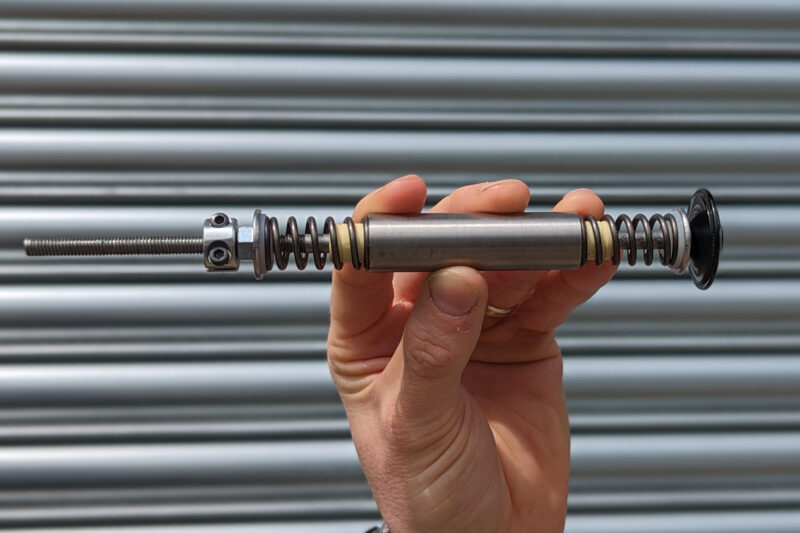
Thoughts on the Rimpact Tuned Mass Damper
Personally, I think this device is absolutely fascinating. Many brands across the cycling industry are waking up to the benefits of damping vibrations – whether its Spank putting Vibrocore into their rims and handlebars, OneUp engineering flex into theirs, RockShox putting ButterCups into suspension, RevGrips with their suspended grips, or indeed the vast array of tire inserts that also claim to reduce vibrations.
There is an increasing amount of innovation going on in this space, and it’s really cool to see. It’s interesting not only from a performance perspective, but also from a health perspective, too. Realistically, the vibrations we experience while mountain biking aren’t super kind to the immune system – as demonstrated by Dr Lewis Kirkwood, so anything that can be done to mitigate them without negatively impacting the joy of riding is a good thing.
Clearly, Rimpact still have work to do in proving the efficacy of their Tuned Mass Damper. We’ll be staying in touch to follow its development, and hope to bolt one onto our own bike over the coming months for some blinded back-to-back testing. Stay tuned, folks!
Editor’s Note: Readers keen to learn more about how mass dampers work to reduce maximum amplitude and to mitigate vibrations within a system, I point you in the direction of this peer-reviewed research article, an article that Matt himself digested during his own learning journey toward development of the Rimpact Tuned Mass Damper.

